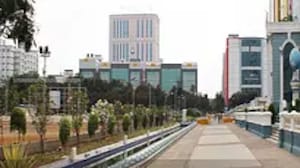Flexible leadership may become a source of creative energy
In entrepreneurial ecosystems, nimble leadership is crucial. focusing on the downstream value chain rather than the upstream one could provide important insights into gaining a competitive edge

Entrepreneurship is a risky endeavor since it involves breaking new ground and frequently venturing into uncharted territory. Many obstacles face entrepreneurs, including a shortage of resources, a lack of trust from stakeholders, and too few people doing too much.
They might lack the necessary tools or training; there might be competition; and there would be no brand name to back the business. Agile leadership is essential for an entrepreneurial endeavor to thrive in such a volatile environment.
A business that can adapt quickly, change the way customers interact with it, and consistently outperform its rivals is what defines an agile corporation. The top leadership must compel the adoption of agile concepts in order to establish an agile enterprise. This will result in an agile management style, which takes a flexible, incremental, and iterative approach to tackling difficult challenges.
For a number of reasons, adaptive leadership is even more crucial in the very unpredictable world of entrepreneurship than it is, say, in leadership positions within established corporate entities.
Entrepreneurs work in a dynamic world that is full of ambiguity, complexity, volatility, and unpredictability. This calls for leaders who can wear many hats and take on drastically varied problems without losing focus on their original objectives.
They must be adaptable enough to quickly shift course in order to meet obstacles head-on and take advantage of emerging possibilities. In order to succeed in their targeted markets, entrepreneurial endeavors undoubtedly face an increasing demand to adopt a culture of innovation and expert collaboration.
Leadership Skills
Agile executives must have a stakeholder perspective while conceiving and delivering value . This is due to the fact that most companies in a particular product or service category in mature industries have maximized and leveraged the upstream..
Read More
- #creativity
- # Innovation
- # ideas
- # resources
Unlock yourpotential!
Let us know your preference and our team will guide you toward your academic journey. Stay tuned for personalized advice.
FAQ's
Flexible leadership is an adaptive approach that prioritizes agility, openness to change, and empowerment of team members. Unlike traditional leadership styles that rely on rigid hierarchies and top-down decision-making, flexible leadership embraces fluidity, collaboration, and responsiveness to diverse challenges and opportunities.
Flexible leadership cultivates an environment where creativity and innovation can thrive by empowering individuals to take risks, explore new ideas, and challenge the status quo. By encouraging open communication, collaboration, and experimentation, flexible leaders create opportunities for diverse perspectives to intersect and inspire breakthrough solutions.
Implementing flexible leadership requires a combination of mindset shifts, structural changes, and leadership practices. Leaders can start by fostering a culture of trust, autonomy, and psychological safety, where team members feel empowered to voice their ideas and take ownership of their work.
Flexible leadership enhances employee engagement and retention by creating a work environment that values individual contributions, fosters personal growth, and promotes work-life balance.
flexible leadership offers numerous benefits, it also presents challenges related to organizational culture, resistance to change, and maintaining coherence amid uncertainty.
Latest News

The university improves learning experiences via creativity and critical thinking

Why We Need to Move Forward with Holistic Assessments in Classroom

BHU creates 15 courses for SWAYAM

The UK Emerges as a Global Magnet for Creative Talents: Here's Why

NEET UG 2024 announced: Every category's NEET cut-off increases
You can also check
- cvr college of engineering
- Gokaraju Rangaraju Institute of Engineering & Technology
- mahatma gandhi institute of technology
- chaitanya bharathi institute of technology
- sreenidhi institute of science and technology
Photos and Videos

















COMMENTS (0)